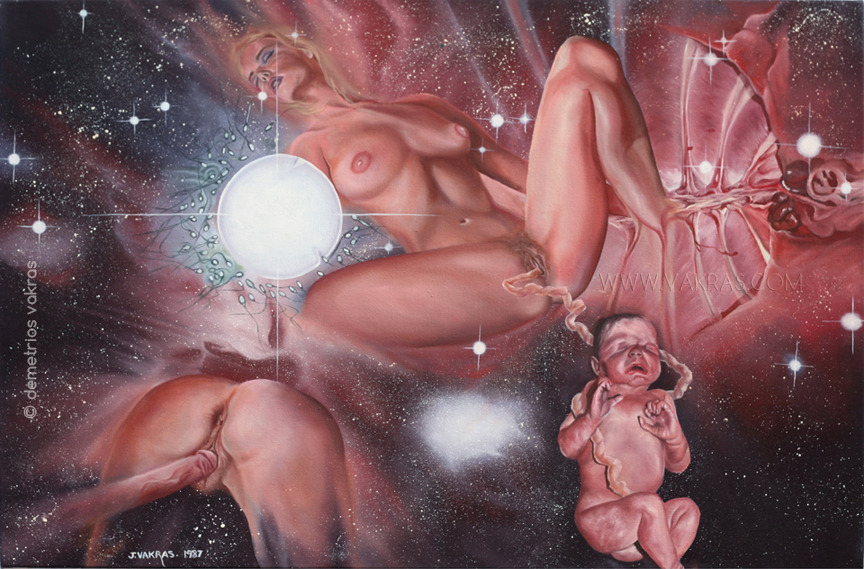|
The intention of this painting was to represent life, fertility, and death within the context of the cosmological processes of star and galaxy generation, destruction, and renewal from the resultant debris of which both are a part. All existence is a continual re–creation into something other than what once had been, out of the debris of what once was. It is the eternal continuum of everything constantly undergoing the same processes of decay to then flower into something else. All that exists is in a state of becoming. The cosmological element used in the painting is the Horsehead Nebula, a cloud of interstellar dust. Heavy elements only exist because a star has run its course and exploded. Everything that we, as living entities are composed of, is the detritus of collapsed stars. We are therefore composed of "star–dust".
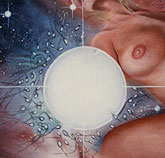 |
The star to the left has been transformed into an ovum surrounded by seminal fluid (sperm) as it appears under a microscope. The female form was suggested by the image of the nebula which suggested the legs. Taken from a "men's magazine" she is intended to represent alluring sexuality, while at the same time being shown to be decomposing into, composed of, anatomical components represented by the rib–cage. She is a cadaver in waiting, an incubator giving birth to that which will replace her, part of that process of becoming. The act of coitus represented at the bottom left leads to the process of fertility, hence the star being fertilised. (Note: the rib–cage is not a Biblical reference; its form too was suggested by the image of the nebula.) |
|
|
The essence of the idea behind eroto-cosmological birth sequence was a scene in Monty Python's movie The Meaning of Life released in 1983. Left, a low resolution gif of the "Big Bang" sequence from the movie (compiled from screenshots taken from a clip on YouTube).
My original version of eroto-cosmological birth sequence was painted in 1986. This version was painted in 1987. In the early 1980s I was fascinated with the origin of life, energy and consciousness. The element I sought to introduce was the impermanence of life: death.
|
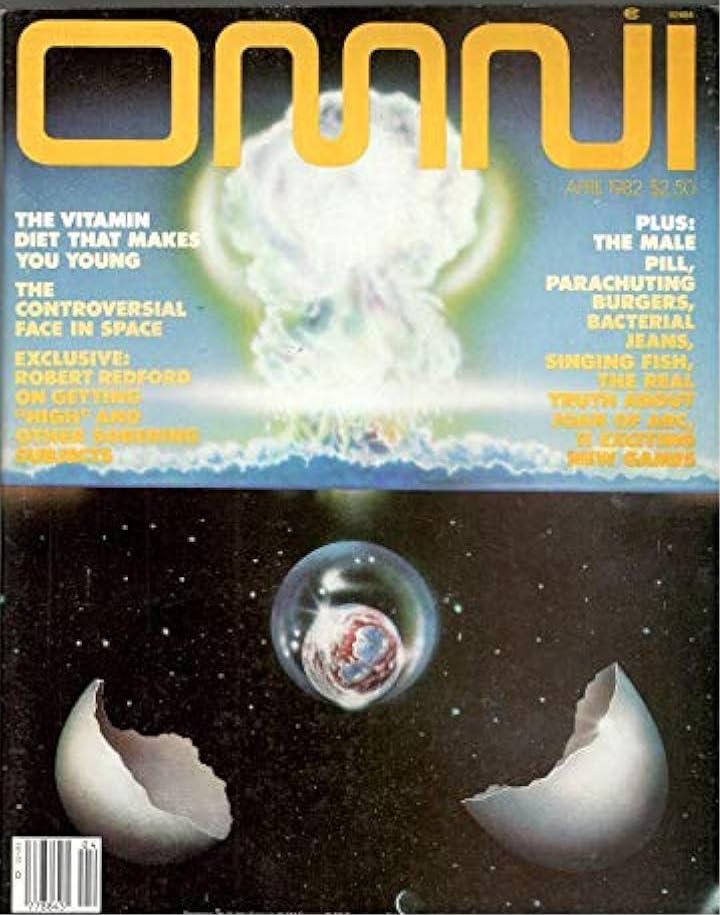 OMNI magazine cover, 1982
OMNI magazine cover, 1982
|
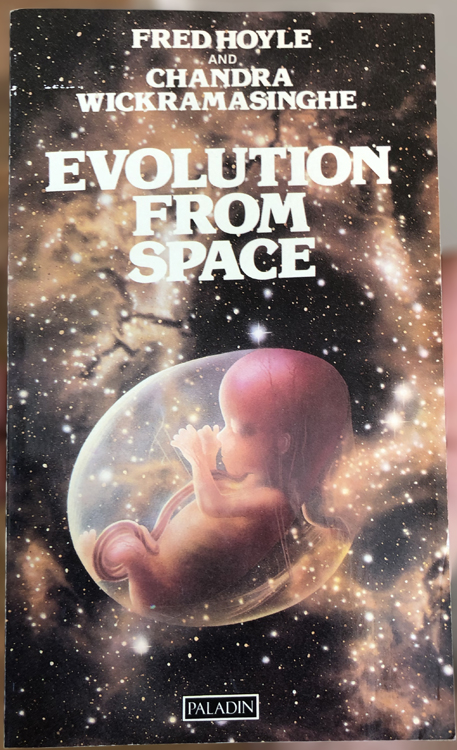 Fred Hoyle, Evolution from Space, 1983
Fred Hoyle, Evolution from Space, 1983
|
rce" and "eternity", forming out of the Buddha's lotus, were somewhat naïve. The element of death and decay is absent.
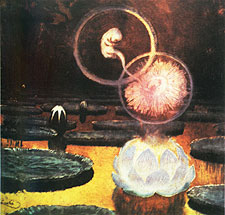 |
Left: Frantizek Kupka, The Beginning of Life, 1900-1903. |
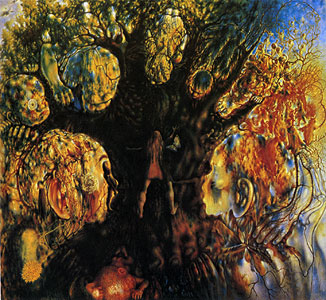 |
Left: Tchelitchev (Tchelitchew), Hide and Seek (Cache–cache),
1940-1942. Tchelitchev here depicts a tree–of–life
which is itself composed from veins and arteries, within
which can be seen emergent anatomical elements which take
the form of foetuses. Life, it would appear, is the energy
that is concealed in the physical elements that enclose it
and from which it is composed. My painting was attempting
to show the sexual component of the same (or similar) theme
in the context of the impermanence of life. Tchelitchev's painting is in the collection of The Museum of Modern Art, New York. (A monograph on his works can be bought here). |
|


